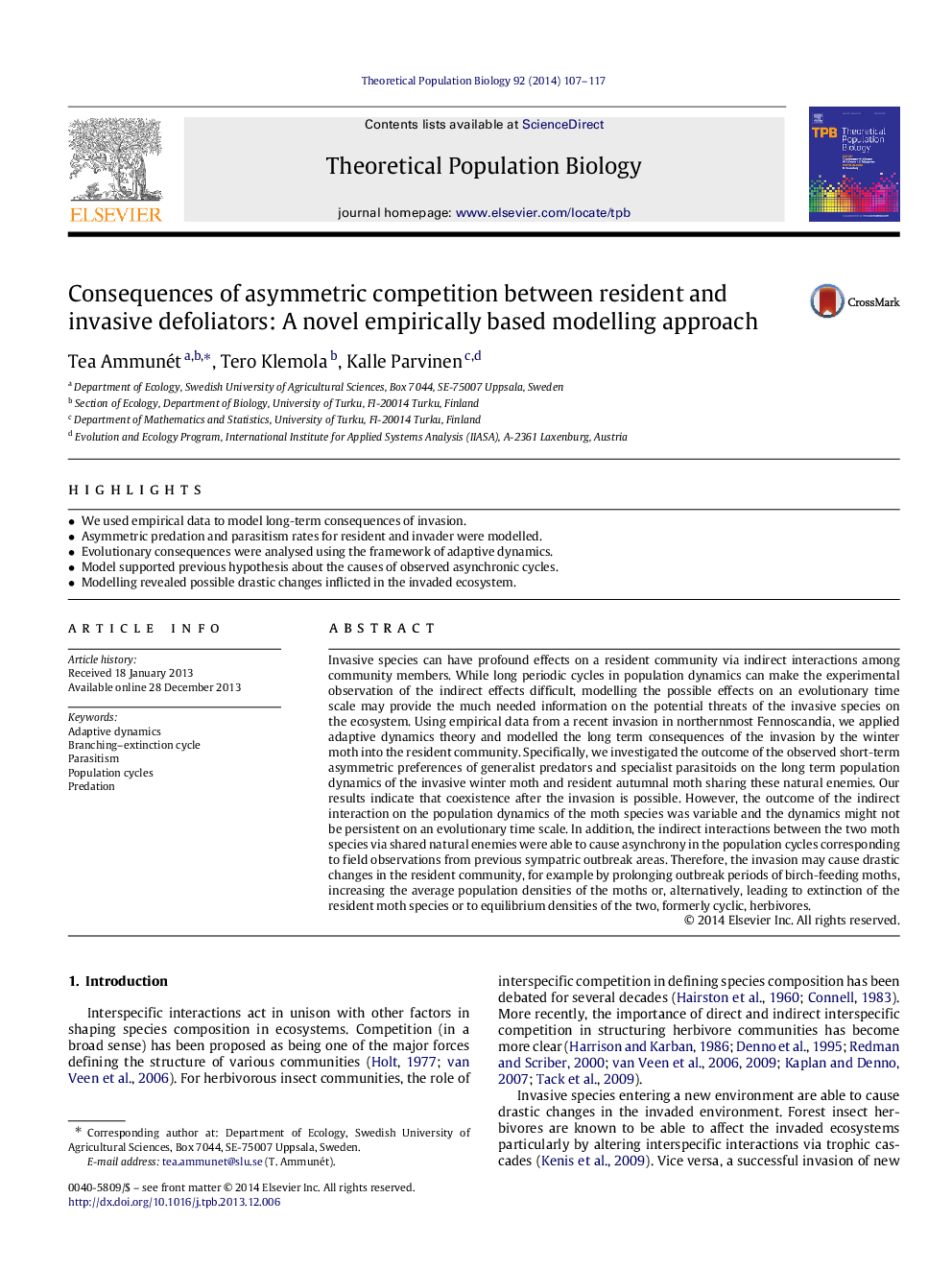| کد مقاله | کد نشریه | سال انتشار | مقاله انگلیسی | نسخه تمام متن |
|---|---|---|---|---|
| 6372385 | 1624160 | 2014 | 11 صفحه PDF | دانلود رایگان |
عنوان انگلیسی مقاله ISI
Consequences of asymmetric competition between resident and invasive defoliators: A novel empirically based modelling approach
ترجمه فارسی عنوان
پیامدهای رقابت نامتقارن بین متفکران مقیم و مهاجم: رویکرد مدل سازی مبتنی بر تجربی
دانلود مقاله + سفارش ترجمه
دانلود مقاله ISI انگلیسی
رایگان برای ایرانیان
کلمات کلیدی
پویایی سازگار، حلقه انقراض، پارازیتیسم، چرخه جمعیت، پیشگویی،
موضوعات مرتبط
علوم زیستی و بیوفناوری
علوم کشاورزی و بیولوژیک
علوم کشاورزی و بیولوژیک (عمومی)
چکیده انگلیسی
Invasive species can have profound effects on a resident community via indirect interactions among community members. While long periodic cycles in population dynamics can make the experimental observation of the indirect effects difficult, modelling the possible effects on an evolutionary time scale may provide the much needed information on the potential threats of the invasive species on the ecosystem. Using empirical data from a recent invasion in northernmost Fennoscandia, we applied adaptive dynamics theory and modelled the long term consequences of the invasion by the winter moth into the resident community. Specifically, we investigated the outcome of the observed short-term asymmetric preferences of generalist predators and specialist parasitoids on the long term population dynamics of the invasive winter moth and resident autumnal moth sharing these natural enemies. Our results indicate that coexistence after the invasion is possible. However, the outcome of the indirect interaction on the population dynamics of the moth species was variable and the dynamics might not be persistent on an evolutionary time scale. In addition, the indirect interactions between the two moth species via shared natural enemies were able to cause asynchrony in the population cycles corresponding to field observations from previous sympatric outbreak areas. Therefore, the invasion may cause drastic changes in the resident community, for example by prolonging outbreak periods of birch-feeding moths, increasing the average population densities of the moths or, alternatively, leading to extinction of the resident moth species or to equilibrium densities of the two, formerly cyclic, herbivores.
ناشر
Database: Elsevier - ScienceDirect (ساینس دایرکت)
Journal: Theoretical Population Biology - Volume 92, March 2014, Pages 107-117
Journal: Theoretical Population Biology - Volume 92, March 2014, Pages 107-117
نویسندگان
Tea Ammunét, Tero Klemola, Kalle Parvinen,
